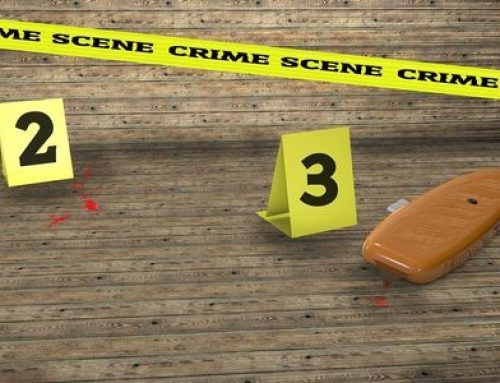
Photo by Louis Reed on Unsplash
Table of Contents
What is Electrophoresis, and How Does it Work?
Electrophoresis is a process used to manipulate and analyze nucleic acids.
This is a quick process in that nucleic acids can be separated within minutes or hours through the use of an electrical field and charged molecules. The charged molecules cause the nucleic acids to migrate through the gel matrix toward the positive electrode while stained with a dye.

Image Credit: ThermoFisher Scientific
To determine the size of the DNA or RNA samples, their mobility will be determined by analyzing the gel after the electrophoresis process and measuring the distance that each nucleic acid traveled. A pattern can be constructed of the strands of DNA in that sample to determine the structure of the DNA.
How Forensic Scientists Use Electrophoresis

Image credit: Freepik.com @anyaivanova
Electrophoresis is used to help solve cases, especially cold cases. As science evolves and technology improves, more and more cases are being solved due to this advanced technology.
Through separating the nucleic acids in DNA samples, forensic experts are able to determine if samples that are taken from the scene of a crime are a match to a suspected murderer. They can use hair, saliva, seminal fluids, or skin to create DNA samples to run through the electrophoresis process. This evidence has become commonplace in solving cold cases and helping overturn wrongful convictions.
Electrophoresis measures the size of the nucleic acids to determine the patterns within the strands of a DNA sample, which they can compare with the DNA they obtained from the crime scene. Conversely, suspects can be eliminated if their DNA doesn’t match the pattern.
Not only is DNA the “genetic fingerprint” of the killer themselves, even partial DNA can now be used to point to relatives of potential suspects. This is helpful where the suspected killer has died, or the biological evidence from the crime scene was unable to be processed due to the small amount collected.
What is An Electrophoresis Lab?
The electrophoresis process to separate nucleic acids, began in the 1960s. Before electrophoresis, researchers utilized a process called density gradient centrifugation, which required heavy equipment, a considerable amount of time, and several quality samples.
To improve this process, researchers added an electrical field to discover DNA characteristics, which is a process now known as electrophoresis. In the 1970s, gel electrophoresis was adopted, as it was a more efficient way of separating the nucleic acids.
Loading a Gel for Electrophoresis
Today, scientists use horizontal slab gels with agarose to run electrophoresis tests. These precast gels come ready to use and are fairly easy to use as well. They are 3-D rectangular gels that lay flat and have a line of oval holes in them at one end of the gel called wells. These wells will store each sample and keep them separated from the other samples.
Before the gels are loaded, a loading dye is added to the samples to track how far the nucleic acid travels. From here, the samples are loaded into the wells in the gel. Once the gel box is plugged in and turned on, the electrical field will begin, and the dye will migrate toward the positive electrode, which usually only takes a few minutes.
After this process is complete, the gel will be removed from the box, placed on a paper towel to absorb the extra gel, then placed on a UV light box to observe the distance that each sample traveled.
Case Study: The Boston Strangler Case

Image Credit: Crime Museum
In 1964, Albert DeSalvo, otherwise known as the Boston Strangler, raped, strangled, and killed 11 women. While he wasn’t convicted of any of these murders due to the lack of evidence against him, he was sentenced to life in prison, as he was convicted of their rapes.
DeSalvo was killed by other inmates in 1973. For decades, investigators wondered if they had the right guy for the murders. Then, in 2013, new evidence would be discovered that would prove them right. When experts tested the seminal fluid that was found on one of the victim’s bodies, they determined that it was a match to DeSalvo’s DNA.
They utilized electrophoresis to compare the patterns on his strands of DNA to the patterns on the strands of DNA that were found on the body. The results concluded that DeSalvo was their guy, as 99.9 percent of the male population could be excluded.
Where To Buy An Electrophoresis Kit
The Carolina Biological Supply Company (we are an affiliate for them) offers all kinds of molecular biology, chemistry, and biotechnology kits through their website, which are easy for teachers to use for their small classes. They provide a number of products that make it fun and easy for students to learn about science.
The electrophoresis kit includes eight stations, six DNA samples, agarose gel, syringes, stains, and staining trays. The kit also comes with a teacher’s manual and student guide. This kit is an easy way for teachers to teach electrophoresis to their students.
Shop online for electrophoresis kits at Carolina.com.
Learn More
For more great articles on the use of DNA in crime solving read DNA Tests Reveal Jack the Ripper’s Identity and then Pet DNA Databases and Cats Solving Crime.





